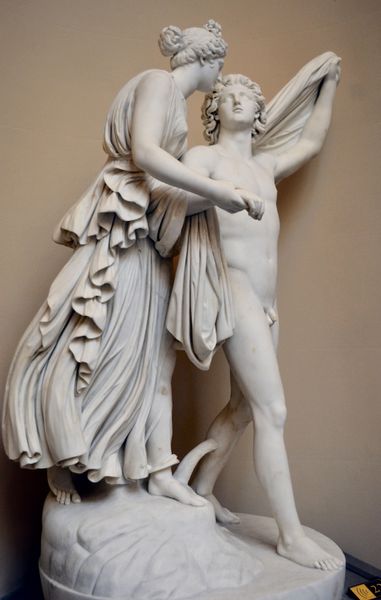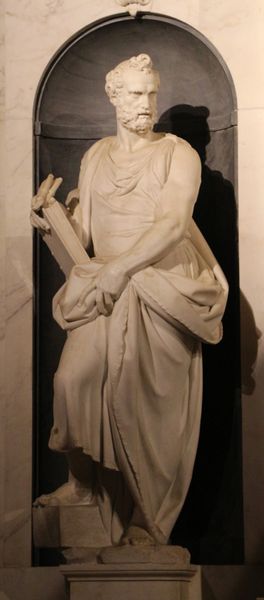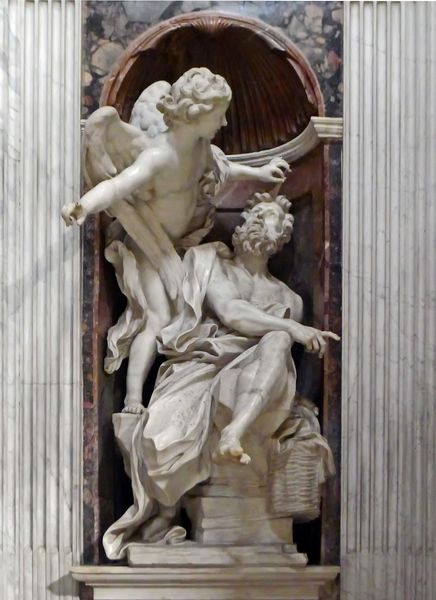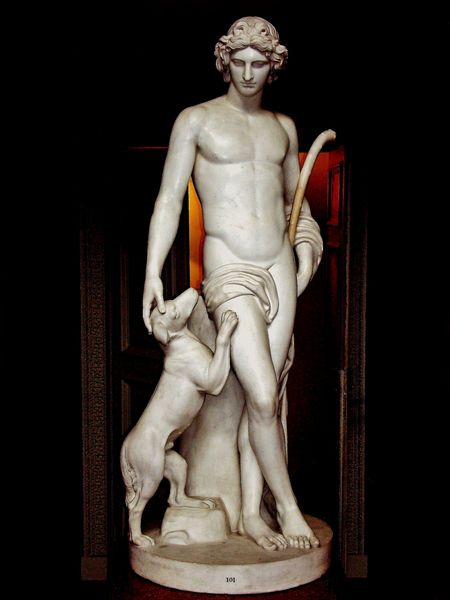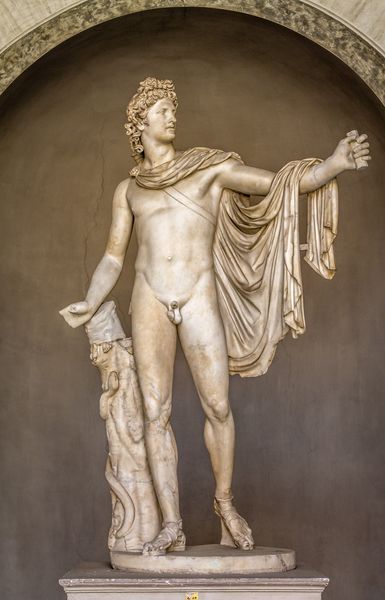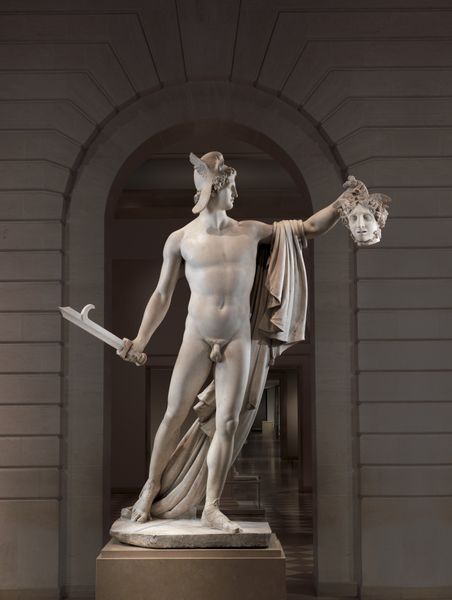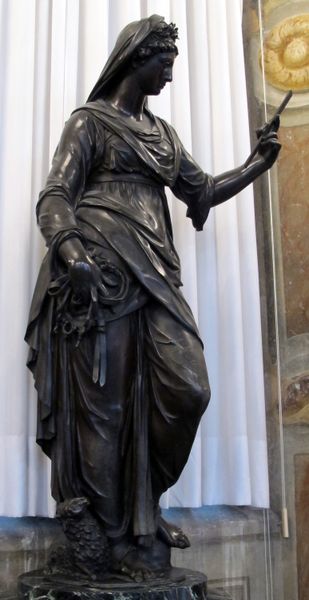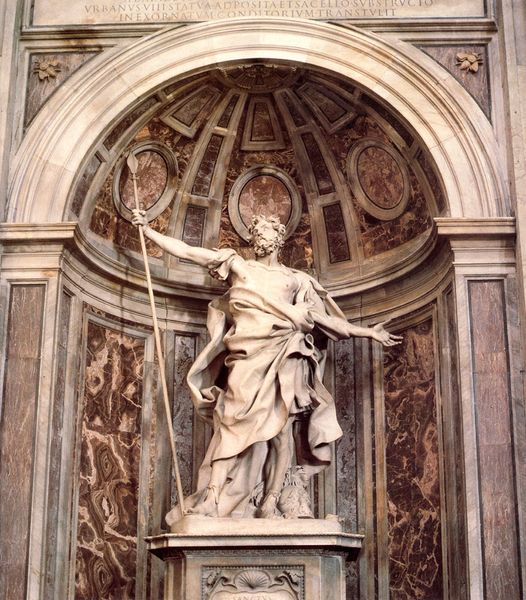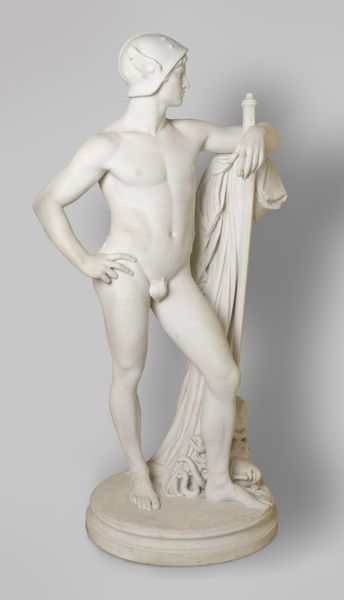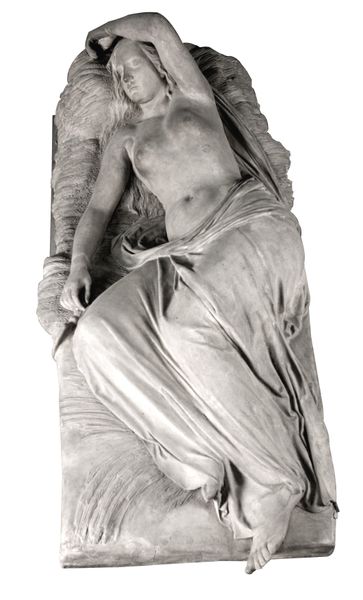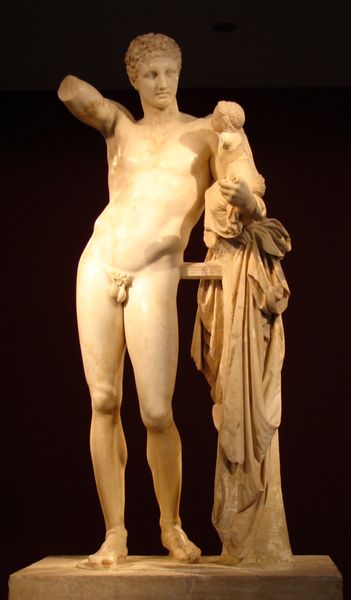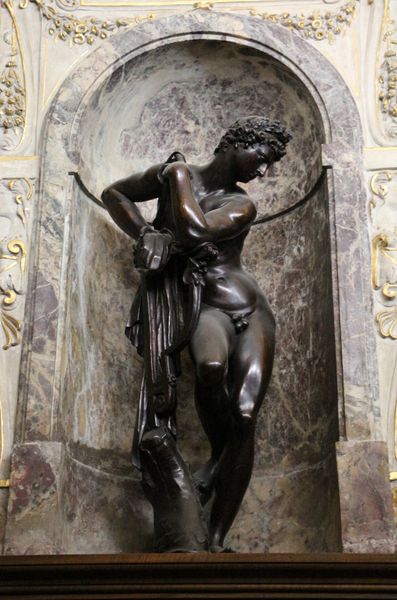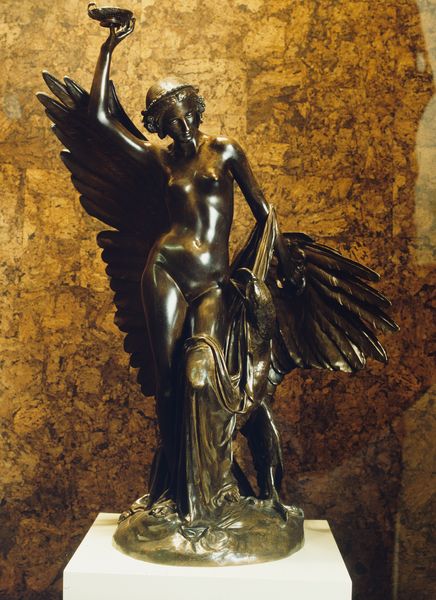
carving, sculpture, marble
#
carving
#
structure
#
sculpture
#
figuration
#
historic architecture
#
sculpture
#
academic-art
#
marble
#
italian-renaissance
#
nude
Copyright: Public domain
Curator: Allow me to introduce Giambologna’s “Duomo (lucca) - Interior” dating back to 1579. What is your initial take? Editor: Immediately, it speaks to a classical tradition—the white marble and the dynamic pose evoke a sense of timeless grandeur, doesn’t it? Curator: Absolutely. Notice the elegant contrapposto stance and the meticulously carved drapery. The play of light and shadow across the marble creates a compelling sense of depth and volume, perfectly capturing a moment of rhetorical action. How might its original architectural context inform its reading? Editor: Thinking about materiality, the extraction and carving of this marble were enormous undertakings. I'm drawn to how this process – quarrying, transporting, sculpting – represents a massive input of labor, particularly when situated inside the Duomo. We are really looking at a confluence of craft and high art at play. Curator: Indeed, the sheer scale of the enterprise is breathtaking. However, let's not overlook the symbolism inherent in the figure’s pose, the confident upward gesture… Could it signify divine aspiration, perhaps? Or a connection between earthly and celestial realms? The upward direction is not incidental to an understanding of its symbolic force. Editor: I wonder though, could this gesture also reflect the artist's relationship to the raw material, the potential embodied within the block of marble? It certainly shows mastery, I would like to see this in person. What considerations about class are enmeshed with the materials of these artworks? Curator: That's insightful. Both avenues offer potential. Considering its setting within the Duomo—the very heart of civic and spiritual life—this sculpture is less about its maker's singular labour and more a testament to collective faith expressed through refined aesthetics. Editor: Agreed. Though grappling with marble and viewing artistic labor through such a lens reveals the economic underpinnings supporting even such expressions of piety and refined artistic technique, shifting perspective as such changes how we address value, making, and art historical context in Renaissance sculpture. Curator: Precisely! It allows for multiple readings depending on your approach. Editor: True—a rewarding ambiguity. Thank you.
Comments
No comments
Be the first to comment and join the conversation on the ultimate creative platform.

